✨You Can Touch the Times Square New Year's Eve Ball!
Find out how you can take home a piece of the old New Year's Eve ball!



People often think that living in New York City means giving up access to the quiet and peaceful. Indeed, for many the cities skyscrapers and yellow taxis are synonymous with a hectic and noisy lifestyle. But if you know where to look, there are places in this metropolis that will make you forget the hustle and bustle of the Big Apple. And you don’t necessarily need to take a long subway ride to some far-away park – there are quiet oasis’s right under most New Yorkers’ noses in the heart of places like Midtown and Soho. From rooms devoted to engaging your every sense to a section of Central Park untouched for 80 years, here are 10 places where you can hear yourself think above the noise of the city.
 Courtesy of the New York Marble Cemetery
Courtesy of the New York Marble Cemetery
In between Bowery Street and Second Ave lies a patch of green dubbed, “A Little Garden in the Big City”, and indeed that is what lies at the end of a small alleyway off of Second Ave and East 2nd Street. Incorporated as a cemetery in 1831, the New York Marble Cemetery (not to be confused with the New York City Marble Cemetery nearby) is the oldest public non-sectarian burial ground in New York City. Although there are no formal headstones, the cemetery houses marble vaults underground built originally due to the outlawing of earth graves over fear of yellow fever outbreaks.
Today, it remains a place of solace amidst Lower Manhattan, although it is open to the public only on specific days outlined on the cemetery’s website. It can also be rented out for special events of all kinds, from religious ceremonies to weddings. It is a New York City landmark and a place of tranquility and historical significance. And of course, many of New York City’s cemeteries are often very quiet – discover the city’s smallest and largest!
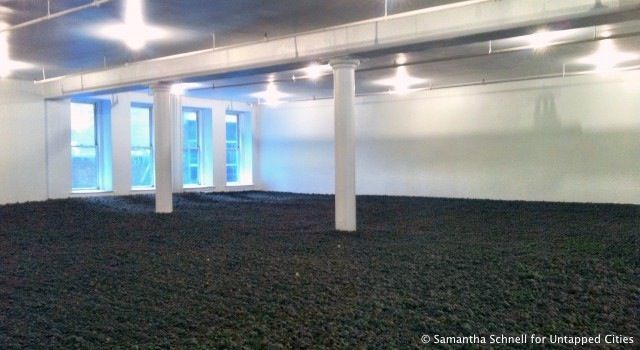
Amidst the art galleries of Soho lies a studio filled with dirt that is worth approximately one million dollars. The New York Earth Room, on 141 Wooster Street, is a gallery dedicated to the 250 cubic yards of earth that make up Walter De Maria’s unique exhibit. Although he passed away in 2013, his memory lives on through this work and its allusion to similar exhibitions he created during his life. His other works also dealt with unique scales of material, for example his Broken Kilometer exhibit during 1979, a collection of brass rods that, if welded together, would have amounted to exactly a kilometer.
Walk up the stairs to this curious art installation, and you’ll find that the scent of dirt and silence of the space is calming and reminiscent of a field after rain. On exhibition since 1980, it traces its roots to the first such installation in Munich in 1968 and remains a curious place of quiet contemplation today.

On the south side of Ellis Island stands one of the quietest places in New York. The Ellis Island abandoned hospital complex, once one of the largest public health projects ever attempted in the United States and previously a model for United States medical care, stands now a remnant of its former self. World-renowned artist JR’s pictures of real immigrants who arrived on Ellis Island are integrated into the crumbling walls of the structure, bringing to life the walls that once held the passengers of ships waiting to enter New York City.
The hospital was originally used to check immigrants’ health and medical history before allowing them to start their lives in America during the early twentieth century, but it also served as a psychiatric hospital for soldiers beginning in 1924, as an internment camp for German, Italian, and Japanese Americans during World War II, as an FBI interrogation center, and more. Its eerie past and present isolation makes it a place that is both chilling and quiet. Check it out on an upcoming Untapped Cities hard-hat tour which offers access to locations not open to the general public:
Behind-the-Scenes Hard Hat Tour of the Abandoned Ellis Island Hospital
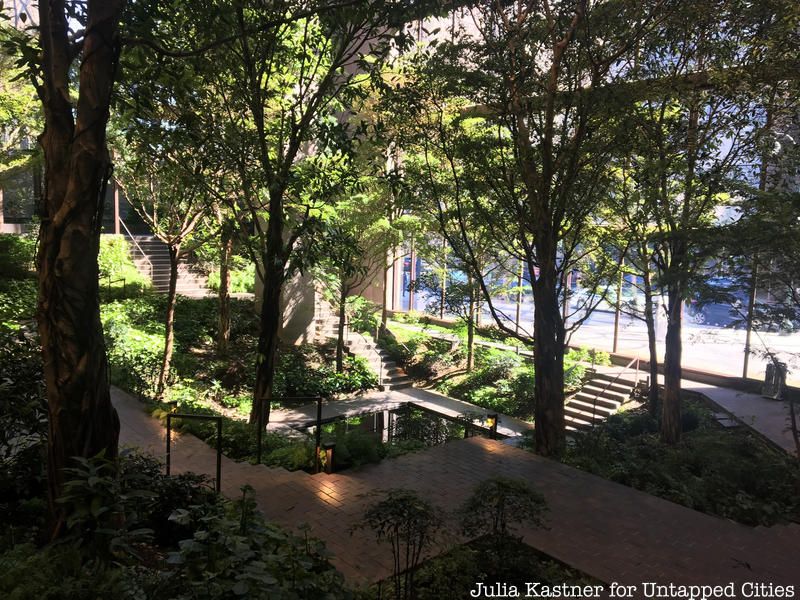
The area around Grand Central tends to be the noisiest and most hectic areas of Manhattan, but walk just a few avenues over to the Ford Foundation building and a tropical wonderland awaits. Located on 43rd street just off of Second Avenue, the atrium of the Ford Foundation building is comprised of a beautifully verdant subtropical garden, with a reflecting pool at its center. Walking around the beautiful terraced space is indeed surreal and offers a respite from the concrete jungle outside.
Originally designed by architects Dan Kiley, Kevin Roche, and John Dinkeloo, the building was deemed a New York City landmark in the 1990s. Struggling with asbestos and general wear-and-tear, the building closed in 2015 for a renovation costing $205 million. Its reopening has pleased many with its additions of a new public art gallery, improvements to the atrium garden, and the renaming of the building to the Ford Foundation Center for Social Justice. An architectural treasure and naturalist’s delight, the building is certainly worth a visit for those looking for some quiet in the heart of midtown.

<
Located on the very tip of Manhattan in the beautiful Fort Tryon park, the Met Cloisters is an obvious choice if you’re looking for a break, both from the sounds of the city and the present day. A branch of the Metropolitan Museum of Art and the only museum in the United States to be dedicated exclusively to Medieval Art, the Cloisters gets its name from the inclusion of architectural elements from five medieval French cloisters in the building, some dating as far back as the 12th century. Thanks to the generosity of avid medieval artifacts collector George Barnard and other donors, the museum features many authentic medieval structures, and houses over 2,000 pieces of medieval art.
The most popular cloisters tend to get quite noisy during peak times of the day, so for a more secluded experience head to the West Terrace, where there are fewer people and a beautiful view of the Hudson awaits. Additionally, the café and adjacent garden is less populated and offers both snacks and splendid views of the river.
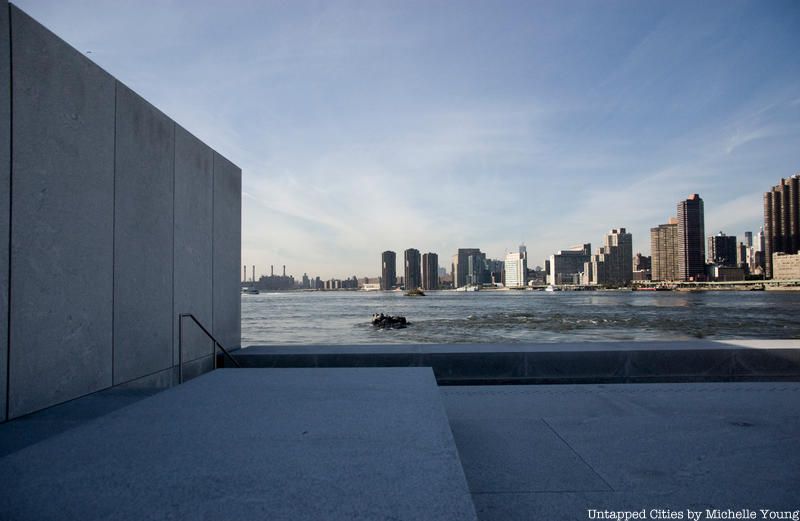
Within Franklin D. Roosevelt Four Freedoms Park, “The Room” at the most southern point, is the perfect place to reflect next to the sound of the East River’s crashing waves. Located on the southern tip of Roosevelt Island, with its own stop on the F train, Four Freedoms Park offers a tranquil and architecturally beautiful landscape in which to gaze at the skyline ahead. A beautiful walk among the spring cherry blossoms of the island leads to the memorial, which includes a bust of Roosevelt and the famous quote from his 1941 State of the Union Address.
The first memorial dedicated to FDR in his home state, it is the last work of Louis Kahn and a tribute to both the famous four freedoms enumerated in Roosevelt’s 1941 speech and his legacy as a whole.
It is open from 9am-7pm everyday of the week, except Tuesdays.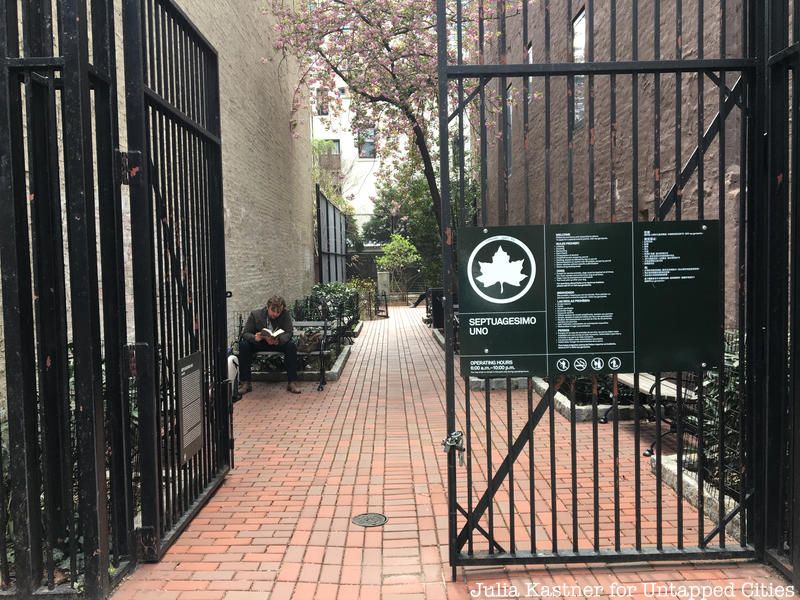
Septuagesimo Uno is a well-kept secret of the Upper West Side. Located on 71st Street, just off of West End Avenue, the 0.04 acre park is surprisingly tranquil amidst the bustle of nearby Broadway. Its picturesque benches invite New Yorkers looking to read their books and newspapers in peace amidst the leafy foliage of the overhanging trees.
Named after the Italian word for “seventy-one”, it is one of the smallest parks in New York City. In fact, it could fit into Central Park about 21,000 times. Opened officially by the parks department in 1981, it underwent a $14,000 restoration project in 2000. Though renovated, however, it remains a slice of secrecy and quiet in Manhattan.
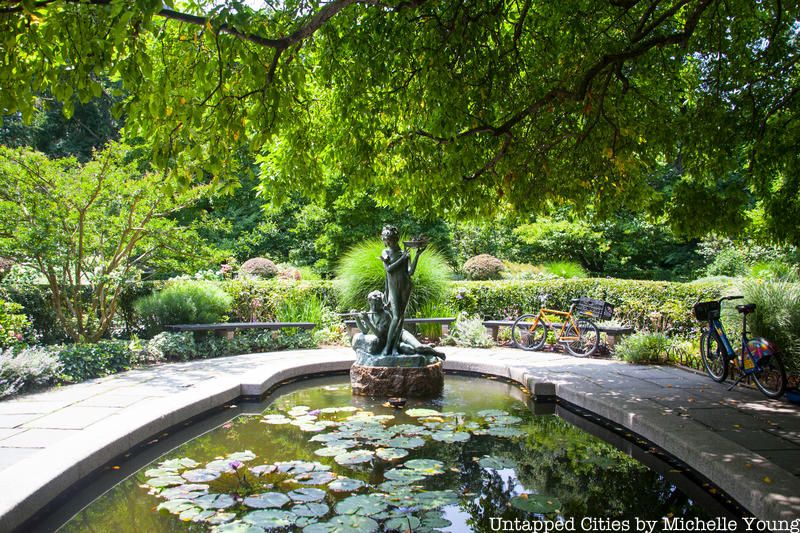
Many people go to the south entrances of Central Park only to find as many people clambering over the rocks and pathways as on the sidewalks of Fifth Avenue. But venture north and the park becomes a place of peace and tranquility. The Conservatory Garden is a perfect example of this. Tucked into the northeast corner of the park, between 104th and 105th street, it is Central Park’s formal garden and a six-acre formally designated Quiet Space.
Split up by style into the Italian, French, and English landscapes, the three distinct gardens within offer different beautiful flora and sculptures. Each garden has its own unique attractions. The Italian garden features a 12-foot high jet fountain, the French garden contains a a beautiful spring tulip display and Three Dancing Maidens sculpture, and the English garden includes a sculpture dedicated to the children’s classic novel The Secret Garden. Built in 1934 to replace the massive glass conservatory from which it got its name, the garden is also steeped in history. It’s entrance gate is part of the Vanderbilt Mansion that originally stood on Fifth Avenue between 104 and 105th streets, and today it preserves this historical significance within a beautiful public space.
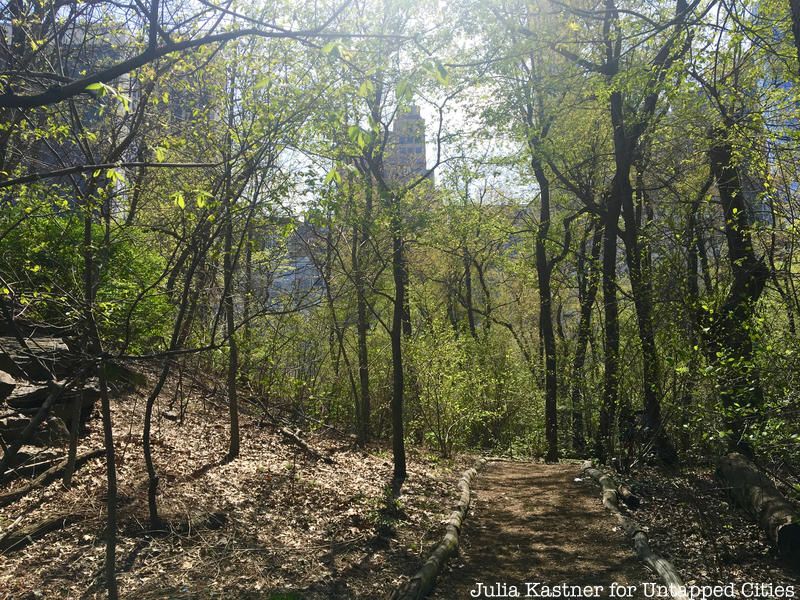
Another hidden Central Park gem lies on the Southernmost corner of the park. The Hallett Nature Sanctuary is located on the eastern edge of the park between 60th and 62nd streets, but despite its proximity to Central Park’s most iconic attractions, it remains relatively unknown. Perhaps this is due to the fact that the sanctuary was closed off from the public from 1934 to 2013, left to grow on its own with absolutely no intervention. During this period of isolation it served as a bird sanctuary, and it remains an excellent area of the park in which to birdspot today.
In 2001, gardeners reentered this area of the park to make it accessible to the public, opening in 2013 to become the smallest of the three public woodland landscapes of the park. Open daily from 10am to 30 minutes before sunset, it offers a feeling of wilderness steps away from Fifth Avenue.

The most surrealist quiet experience in this list, the Dream House in Soho offers a peaceful surrounding like no other. Created in 1993 by married artists La Monte Young and Marian Zazeela, the space is dedicated to using the mediums of light and sound simultaneously in order to engage you in an entirely novel way. Open from 2pm to midnight from Wednesday through Saturday, entry is just $10, a small price to pay for the other-worldly experience inside.
The burning incense and eerie lighting of the environment are often the first aspects of the exhibit that greet viewers, but the carpeted floors and pillows also contribute to the relaxing mood of the space. A humming sound accompanies all of this stimulus, so constant that it eventually becomes white noise amidst the purple hue of the room. Although not for everyone, the Dream House is a well-hidden secret that aims to be a haven of tranquility amidst the cobbled streets of Soho.

Founded by Belgian monks, Burp Castle in the East Village has an exquisite craft beer selection as well as free pomme frites. Most importantly, this quiet New York City bar is probably the only bar at which you could actually hear your friends speak. The walls are covered with absurd paintings of drunk monks resembling pirates, going bananas on a medieval ship. The legend tells the monks also served drinks here in the nineties, but now they just have regular waiters. Allegedly, the monks want their beer to be enjoyed in silence, which basically means you’ll be shushed every once in a while by the waiters. As one Foursquare reviewer noted “You can find a 1000 noisy bars in NYC but only one quiet one.”
There are plenty more quiet spots in New York City of course – what would you add?
Next, check out the top 10 places for your very own urban oasis in Manhattan or a map of all the quiet place in NYC
Subscribe to our newsletter